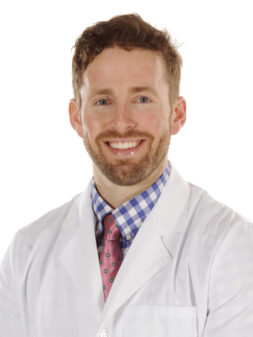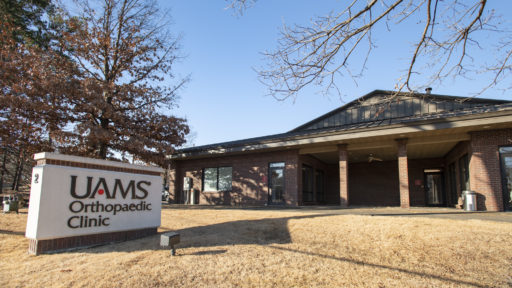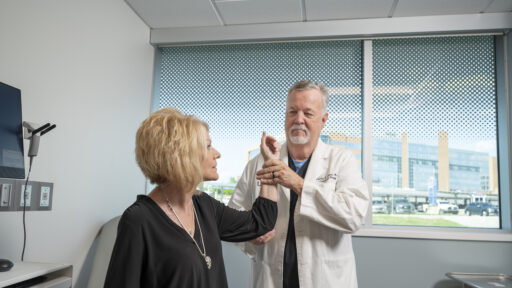Description
Dr. Robert D. Martin is a board-certified, fellowship-trained orthopedic surgeon who specializes in treating the foot and ankle. Using cutting-edge procedures and treatments, he provides personalized surgical and nonsurgical care to patients with a wide variety of conditions and diseases.
Video Player
Transcript
My name is Rob Martin. I’m an orthopaedic surgeon, fellowship-trained in foot and ankle surgery, working at UAMS.
The whole lower extremity is linked. So if you have foot pain and it changes the way that you walk, then that changes the way that your knee moves, which also changes the way that your hip moves and can even go on up and cause back problems.
I think what I enjoy most about the subspecialty is that I can see patients all the way from two years, all the way to 92 years old with a variety of problems. And that’s one of the things I enjoy most about clinic is getting to see people from all ages, all backgrounds and with varying degrees of different problems. So each patient that we see in clinic, when we come up with a treatment plan, we take several things into account. We take into account that patient’s goals for returning back to their activities, and we take into account their lifestyle, as far as what activities they do on a daily basis, whether or not they’re wanting to get back to work or just wanting to be able to walk several steps again without pain. We also take into consideration other medical comorbidities, such as obesity and diabetes.
One of the things I tell all of my patients — the patients that I think I might end up having to operate on and even those I don’t — is that I am a surgeon and I love to operate. But before I operate, we’re going to do everything that we can to make sure that we’ve tried all non-operative modalities to get you back to a pain-free life before we consider surgery.
I think the important thing for patients to understand is that there’s really no problem that’s too small. Oftentimes, I see patients in clinic who just have heel pain, which can be as simple as plantar fasciitis, which is largely treated non-operatively. And sometimes those patients leave clinic apologizing for taking my time. But my message to those people is, that’s what I’m there for.
My patients inspire me every day with their determination to get better and to find a solution to their problems. And that’s the driving force behind what I do is making my patients better.




